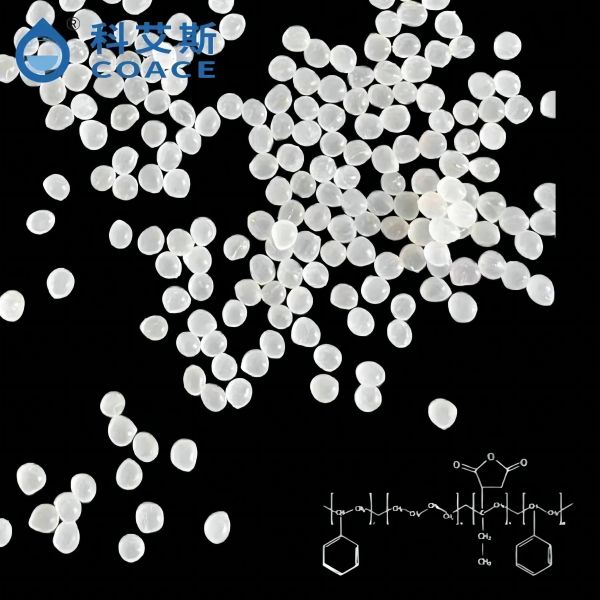Modified plastics are playing an increasingly important role in national life, and plastic toughening technology has always been concerned by academic research and industry.
The plastic toughening effect is influenced by three elements.
1. Matrix resin's characteristics
According to studies, increasing the toughness of the matrix resin will increase the toughening effect of plastics that have been hardened. The matrix resin's toughness may be increased in the following ways:
Narrow the molecular weight distribution by increasing the matrix resin's molecular weight and increase toughness by regulating crystallinity, degree of crystallization, crystal size, and crystal shape. For instance, adding a nucleating agent to polypropylene (PP) speeds up crystallization and refines the grain structure, increasing the material's fracture toughness.
2. Toughening agent dose and characteristics
①. The toughening agent's dispersion phase's dispersed particle size has an impactThe qualities of the matrix resin and the ideal value of the particle size of the elastomer's dispersion phase are different for elastomer-toughened plastics. For instance, the ideal rubber particle size in HIPS is between 0.8 and 1.3 m, the ideal ABS particle size is around 0.3 m, and the ideal PVC-modified ABS particle size is roughly 0.1 m.
②. The impact of the quantity of toughening agent applied; the particle distance parameter is connected to the ideal amount of toughening agent added;
③. The influence of toughening agent glass transition temperature – the lower the glass transition temperature of general elastomers, the better the toughening effect;
④.The impact of the toughening agent on the interface strength of the matrix resin – the impact of the interfacial bond strength on the toughening effect varies for different systems;
⑤.The effect of the elastomer toughener's structure, which is influenced by the kind of elastomer and the degree of cross-linking, among other factors.
3. The force that binds the two phases together
The macroscopically higher overall performance of the plastic is mostly due to the gain in impact strength, but a good bonding force between the two phases can also make it possible for stress to be successfully conveyed between the phases while using more energy. This binding force is typically thought of as the interaction between two phases. Block and graft copolymerization are frequent techniques for enhancing the bonding force between two phases. The distinction is that they create chemical linkages using techniques like grafting and block copolymerization. Block copolymer SBS, polyurethane, ABS, and branch copolymer HIPS.
It falls under the category of physical blending for polymers that have been hardened, but the basic idea is the same. The two components should be somewhat compatible and create their own phases in the ideal blending mechanism. Between the stages is an interface layer. The two polymers' molecular chains diffuse with one another in the interface layer, and the gradient in concentration is clear. As the mixing is intensified The components' compatibility results in a strong binding force, which subsequently improves diffusion to scatter the interface and thicken the interface layer. The crucial technology for creating polymer alloys at this point is polymer compatibility technology, which also includes plastic toughening!
What do tougheners for plastic do? How do you split?
(一)The properties of matrix resin
1. Rubber elastomer toughening: EPR, EPDM, butadiene, natural, isobutylene, nitrile, etc.; suitable for toughening modification of used plastic resins;
2. TPE toughening: SBS, SEBS, POE, TPO, TPV, etc.; mostly used to toughen polyolefins or non-polar resins, as well as to toughen polymers with polar functional groups like polyesters and polyamides. Whenever compatibilizer is added;
3. Core-shell copolymers and reactive terpolymers are used to toughen engineering plastics and high-temperature polymer alloys, such as ACR (acrylates), MBS (methyl acrylate-butadiene-styrene copolymer), PTW (ethylene-butyl acrylate-methyl glycidyl acrylate copolymer), and E-MA-GMA (ethylene-methyl acrylate-glycidyl me

4. Blending and toughening of high-toughness engineering plastics, such as PP/PA, PP/ABS, PA/ABS, HIPS/PPO, PPS/PA, PC/ABS, PC/PBT, etc.; polymer alloy technology is essential for this process;
5. Toughening via other techniques, such as using sarin resin (a DuPont metal ionomer) or nanoparticles (such as nano-CaCO3);
(二) The toughening of modified polymers can be broadly categorized into the following circumstances in real industrial production:
1. To satisfy the demands of usage, the toughness of synthetic resins such as GPPS, homopolymer PP, etc. must be enhanced because they are now insufficiently tough;
2. Significantly increase the toughness of polymers, such as nylon that is extremely strong, to satisfy the demands of extreme toughness and prolonged usage in low-temperature situations;
3. The performance of the material is decreased after resin modification, such as filling and flame retardant. Effective toughening needs to be done right now.
Free radical addition polymerization is typically used to produce general-purpose polymers. Polar groups are absent from the molecule's side chains and main chain. Rubber and elastomer particles can be applied during toughening to improve the toughening effect;
Condensation polymerization is often used to create engineering polymers. Polar groups are found in the side chains or end groups of molecular chains. Functionalized rubber or elastomer particles can be introduced during toughening to increase toughness.
In conclusion, plastic toughening is crucial for both crystalline and amorphous plastics, and as general-purpose, engineering, and special engineering plastics gradually improve their heat resistance and become more expensive, the resistance to toughening agents also increases. The demands for heat resistance, age resistance, etc. are stronger, and it is also a major test for plastic modification and toughening technology. However, maintaining excellent compatibility with the matrix and components is the most crucial and vital factor!











